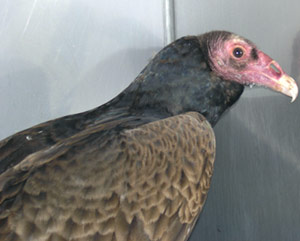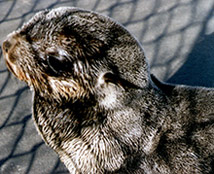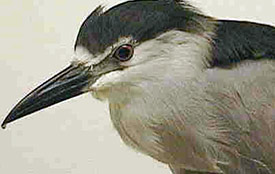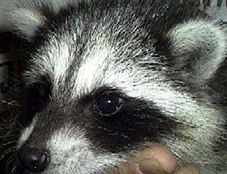 Last week an officer from the
Inland Valley Humane
Society, IVHS, brought us a Turkey Vulture that was unable to fly. IVHS
is another fine agency that does its best to save wildlife. They
regularly bring us their injured wildlife, all the way from Pomona, just
to get the injured wildlife to the proper facility for treatment; giving
the injured patient the best shot at being released back into its native
habitat. Last week an officer from the
Inland Valley Humane
Society, IVHS, brought us a Turkey Vulture that was unable to fly. IVHS
is another fine agency that does its best to save wildlife. They
regularly bring us their injured wildlife, all the way from Pomona, just
to get the injured wildlife to the proper facility for treatment; giving
the injured patient the best shot at being released back into its native
habitat.
Turkey Vultures are very unique
animals. While being very curious by nature, they are quite personable
by nature. They also have incredible flight characteristics and can
utilize a thermal with more finesse than any of the best pilots, using
all of the latest technology and equipment. All while “fueling” itself
on waste and providing a much needed service to all, by cleaning up that
waste. This is truly one of our Creator’s best creations.
On examination, we found this patient to be dehydrated,
emaciated and the left humeral, radial and ulna joint (elbow) were
very obviously broken. We hydrated and fed this bird while we prepared
the radiology equipment. We knew this was probably a mistake due to the
fact this species of bird’s defense techniques is to
regurgitate. It doesn’t hurt the bird; it’s just a very unpleasant mess
to clean up. I mean it does sound kind of gross and nasty but it is
actually very Zen-like if you take into consideration if something is
harassing this bird, the reason for the harassment is “hunger” and to
solve that problem, the Turkey Vulture is willing to share its last meal
with whomever is harassing it. Let’s just hope it doesn’t feel harassed
during the radiographs.
It just so happened that this
bird did feel stressed during the radiograph and reacted in the predicted manner. Fortunately our radiologist agreed with us that it
was more important to cure this patient's hunger and dehydration than it
was to be concerned with cleaning the floor. We returned
this patient back to its enclosure gave, it some mice and water and
waited for the films to be developed. The radiographs
revealed the injury to this Turkey Vultures elbow was such that it will
never be able to fly again, leaving this bird non-releasable. We will
now follow all set procedures dictated by the State of California’s
Depart of Fish & Game regarding non-releasable wildlife. |




 Last week an officer from the
Last week an officer from the
